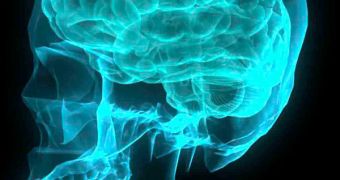In just a few minutes every day, you too could exercise your brain in an efficient manner, that does not entail listening to complex classical music, or solving puzzles and wordplays. The technique is called n-back training, experts say.
The improvements this exercise produces in the brain are visible in a standard test of fluid intelligence just 20 days after training stars. It takes about 20 minutes a day to carry out the routine.
The announcement was made on Saturday, May 28, by psychologist John Jonides, who is based at the University of Michigan, He was speaking in front of colleagues gathered at the annual meeting of the Association for Psychological Science (APS) in Washington, DC.
He explained that fluid intelligence is a measure that refers to people's ability to reason properly, and solve new problems as they come along. The expert added that this is a critical element of what people generally refer to as intelligence.
The positive effects of the training sessions laster for as much as three months after the exercises were discontinued. Jonides carried out the research with a team of U-M experts, and with colleagues at the University of Bern, in Switzerland, and the University of Tapei, in Taiwan.
Jonides, the U-M Daniel J. Weintraub Collegiate professor of psychology and neuroscience, said that more than 200 test subjects were analyzed during the new investigation. Participants included both children and young adults.
He added that the US National Science Foundation (NSF) and the Office of Naval Research provided the necessary funding for this work. N-back tasks, he went on to say, train the working memory.
In addition to storing, the working memory also contributes to processing information, while at the same time maintaining it within reach, for easy access. This type of memory can also resist interference and distractions, scientists add.
“These new studies demonstrate that the more training people have on the dual n-back task, the greater the improvement in fluid intelligence,” Jonides told colleagues at the conference.
“It's actually a dose-response effect. And we also demonstrate that the much simpler single n-back training using spatial cues has the same positive effect,” he went on to say.
“We found two effects of our training regimen. After training, people had reduced amounts of blood flow in active brain regions when they were doing training tasks,” the investigator explained.
“And they had increased amounts of blood flow in those regions when they were not doing training tasks. In some ways, this is much like training a muscle in the body, and in some ways, it is different,” he concluded.

 14 DAY TRIAL //
14 DAY TRIAL //